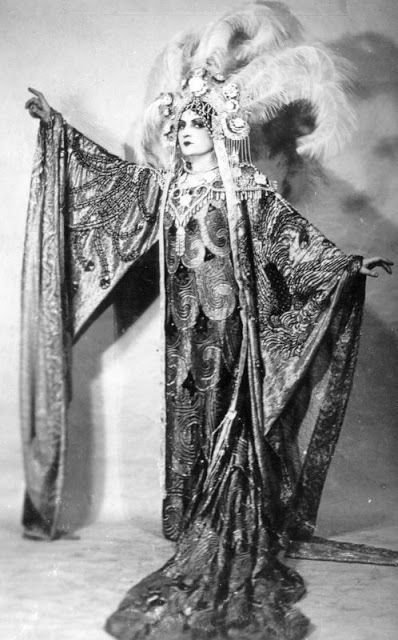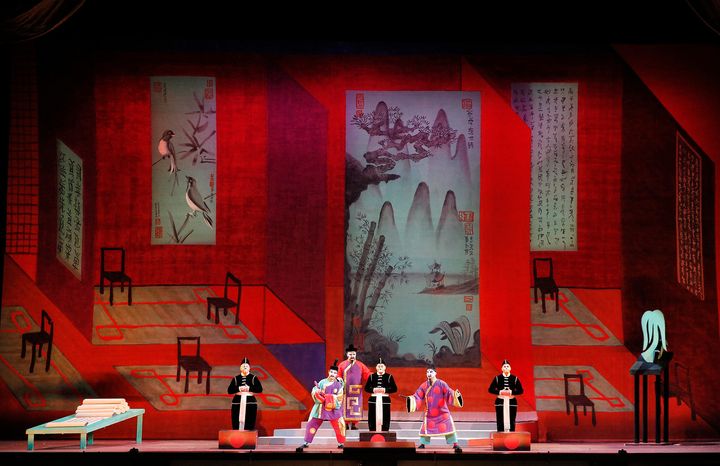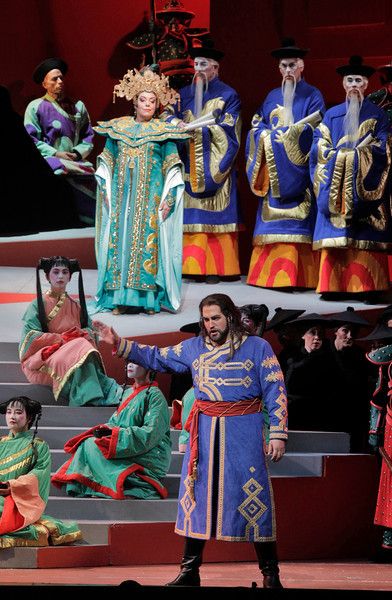After a recent performance at the San Francisco Opera, I opted to take a Lyft car home from the War Memorial Opera House. Because the driver was curious about the performance I had attended, I told him a bit about the evening and asked if he had ever been to an opera. For a variety of reasons he had never experienced live opera, he sighed, saying that he had only been able to watch some clips on television and YouTube. He had, however, been to some outdoor concerts (mostly by folk and rock musicians).
He was shocked when I explained that live operatic performances do not use amplification and that, as a result, singers must rely on breath control in order to project their voices over a large orchestra and fill a hall that may seat as many as 3,000 people. Like many people who have grown up listening to music that has either been amplified or "sound designed," he had no idea of the remarkable difference in the quality of sound one hears when voices are not "enhanced" by electronic means.
Those who attend live operatic performances have experienced the thrill of a unique voice's wondrous warmth, stunning strength, tonal timbre, and clarion clarity. I can still remember how, one night in October 1972, I snuck a friend into the War Memorial for the final act of Gotterdammerung so he could hear Birgit Nilsson perform Brunnhilde's Immolation Scene. Because we were seated on the extreme side of the auditorium, it felt as if I had been watching a powerful human calliope pumping a wave of sound through the theatre. Multiply that sound by a chorus of more than 75 voices and the sensation becomes astonishingly visceral in a way that no recording can ever deliver.
The first time I attended a performance of Puccini's final opera,Turandot, was late in December of 1966. It was the Metropolitan Opera's opening season at its new home in Lincoln Center, a season during which Teresa Stratas, Anna Moffo, and Mirella Freni would portray the slave girl, Liu. Although the production had opened with Birgit Nilsson and Franco Corelli in the leads, the performance I attended starred Anita Valkki (a Finnish soprano who, thanks to Princess Turandot's impressive headdress, looked gigantic) and Flaviano Labo, a short Italian tenor who barely came up to her neck.
Since I was just starting to learn about opera and had only read a synopsis of the plot (which takes place in a fantasy version of ancient China), I was totally unprepared for the exotic musical treasures contained in Puccini's score. That performance was also the first time I experienced the raw power of an operatic chorus and orchestra simultaneously building to an orgasmic crescendo. At the climax of Acts II and III, I thought I had died and gone to heaven. As former Vice President Joe Biden would say, "Literally!"
The last two productions of the San Francisco Opera's 2017 fall season demand the use of a large chorus. One uses men and women, the other is strictly written for a men. And yet, the power unleashed in each case is a force to be reckoned with. There are moments in the new John Adams opera, Girls of the Golden West, during which a chorus of gold miners is brought down to the footlights while generating a wall of sound that is beyond thrilling (I'll have more to say about that production in an upcoming column).
It's no secret that an opportunity to design a production of Turandot is the professional equivalent of a scenic and/or costume designer's wet dream. A new staging of Puccini's opera usually involves some sort of shared co-production between a group of opera companies which will allow them to amortize their investment over a period ranging from 10-20 years with the potential for additional revenue from rentals to other opera companies. Designers have plenty of glitz at their disposal with which to indulge their most extravagant Orientalist fantasies. Consider the following two costume photos:

Rosa Raisa sang the role of Princess Turandot at La Scala during the world premiere of Puccini's opera on April 25, 1926

Birgit Nilsson wearing a costume designed by Cecil Beaton for the Metropolitan Opera's 1961 production of Turandot
Set designs for Turandot's four scenes often feature some kind of staircase.

A scene from Beni Montresor's production of Turandot (originally designed for the New York City Opera)

A scene from Jean-Pierre Ponnelle's production of Turandot staged at the Finnish Opera

A scene from Allen Charles Klein's production of Turandot (a shared venture between several opera companies)

A scene from Franco Zeffirelli's production of Turandot (originally designed for the Metropolitan Opera)
For now, let's concentrate on a thrilling performance of San Francisco Opera's 25-year-old Turandot production designed by David Hockney with costumes by Ian Falconer. A shared venture with the Lyric Opera of Chicago, this production was first seen here in 1992 and has been revived in 1993, 1998, 2003, 2011, and September of 2017. In addition to stating that, after 25 years in service, the sets had undergone repainting and substantial refurbishment, the press notes indicated that:
"Because the design abounds in unusual geometric shapes (many of them flying at compound angles), translating all of these into exact measurements for construction took six weeks of computer work alone. The all-important color scheme demanded considerable attention during the building process, not only because of the colors themselves, but because of how it reflected the varied lighting palette. The primary colors that Hockney chose for the scenery dictated the primary and secondary color choices for the lights. In order to maintain the color palette, it was necessary to avoid the use of modern equipment that would alter the color and intensity and affect the balance of light between the costumes and scenery."
In his 1993 book entitled That’s the Way I See It, Hockney explained that:
“Turandot was the only Puccini opera I would do because it is not verismo, there is some fantasy in it, it takes place in mythical China. Straight away I chose the colors, which are predominantly red (the color of the walls of the Forbidden City in Peking). I was inspired by the Chinese red I had seen on my travels in China in 1981. I had seen many productions of Turandot, most of them kitsch beyond belief, overdone chinoiserie and too many dragons. It was clear to me (in the first scene in Peking) that Turandot was about cruel China, about harsh, sharp edges, axes, not about soft things, certainly not the China of Le Rossignol. That was my main theme at the beginning as well as the red walls. For the first scene, the city of Peking, I suggested that we take the dragons away and put them into the roofs, in forms that felt like dragons, without specifically looking like them, thus evoking the grotesqueness of the city.”
“I wanted to do away with the excessive 19th-century Chinese look (the Victorian look) and use the drama and the music and make forms. So we began to make harsh edges, strong diagonals, using mad perspectives. We made little models first, just as notes, and then carefully made the big models. We used lighting right from the start, keeping in mind how the costumes should look, since Chinese costumes are elaborate.”

A moment from Act II, Scene I of Turandot
“Turandot is an opera with a large chorus on the stage for a lot of the time and you have to take into account how they come on, get off, and how other characters play against them. We worked it out slowly: when we got the red walls, I suggested that the chorus, the people of Peking, the popolo, should be dressed in black against them. Ian and I designed it together because, for one thing, there are 200 costumes in Turandot and I wanted him to do them. Ian did a superb job and of course we found marvelous reference books covering 2,000 years of Chinese costume -- a very rich area to explore. Even though the costumes were not in the end elaborate -- they were bold abstractions of Chinese costumes—they were marvelous.”

Ping, Pang, and Pong try to deter Prince Calaf (Brian Jagde) from pursuing PrincessTurandot in Puccini's opera
Opera is not just about voice, but also about the coloring and shaping of sound. In discussing the November 25th performance with several friends who were also present that night, it was fascinating to note how we all commented on one particular phenomenon. Because we've seen this production numerous times over the past 25 years, we're well acquainted with how it looks and have experienced performances that seemed stiff, mechanical, and less than inspired. By contrast, the November 25th performance was dramatically smooth, emotionally fluid, and musically electrifying. Why was this night different from others?
- The soprano singing the title role was Nina Stemme, a great Wagnerian who gave a brilliant performance as Brunnehilde in San Francisco Opera's 2011 Ring cycle. In addition to having a secure vocal technique, Stemme's voice boasts an uncommon strength and warmth which allows her to color Princess Turandot's music with a bit more shading than other sopranos. Whereas Birgit Nilsson was famous for the steel in her voice (and Linda Kelm had a lemon-tinged voice that sounded like it could cut through steel), Stemme's is a bit more like lava: freely flowing molten rock that is awesome in the intensity of its heat.
- It was immensely satisfying to have a tenor whose height allowed him to look more like a conquering hero than the runt of a litter. As Calaf, Brian Jagde brought more than mere optics to the stage. Unleashing a powerful voice that rose to every musical challenge with stentorian strength (and without ever sounding strained), his was the kind of performance that demonstrates the athletic as well as the vocal thrills of live opera.

Nina Stemme (Turandot) and Brian Jagde (Calaf) in Act II, Scene II of Turandot
- Because this fall's Turandot production was split between six performances in September and six in late November/early December, by the November 25th performance people onstage seemed a bit more confident and relaxed than they might have been earlier in the run. Under Garnett Bruce's effective stage direction, Ping (Joo Won Kang), Pang (Julius Ahn), and a comically bow-legged Pong (Joel Sorensen) worked together like an well-oiled vaudeville act. Robert Brubaker shone in his brief vocal moments as Turandot's father, Emperor Altoum.
- An audience favorite from her years as a Merola singer and Adler Fellow, Leah Crocetto's performance as Liu brought her keenly focused voice to bear on the slave girl's two arias. Making his San Francisco Opera debut as Timur, Soloman Howard displayed a rich, warm basso.

Leah Crocetto (Liu) and Soloman Howard (Timur) in Act I of Turandot
Last, but certainly not least, a huge amount of credit goes to maestro Christopher Franklin (who made his San Francisco Opera debut conducting this production) and chorus director Ian Robertson, whose work melted a wall of music and transformed it into a tidal wave of sound.

Nina Stemme and Brian Jagde in the finale of Turandot
